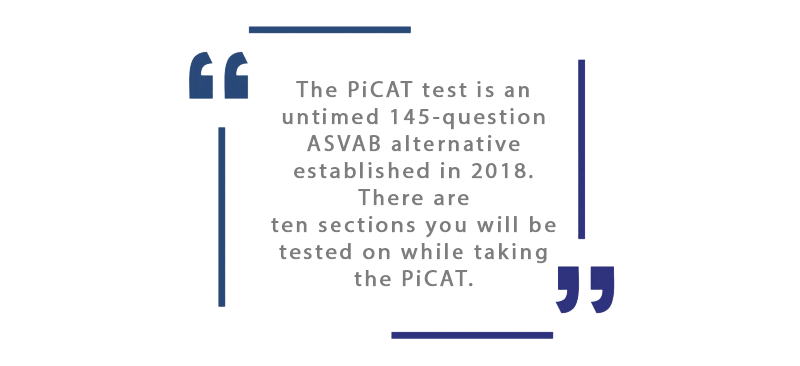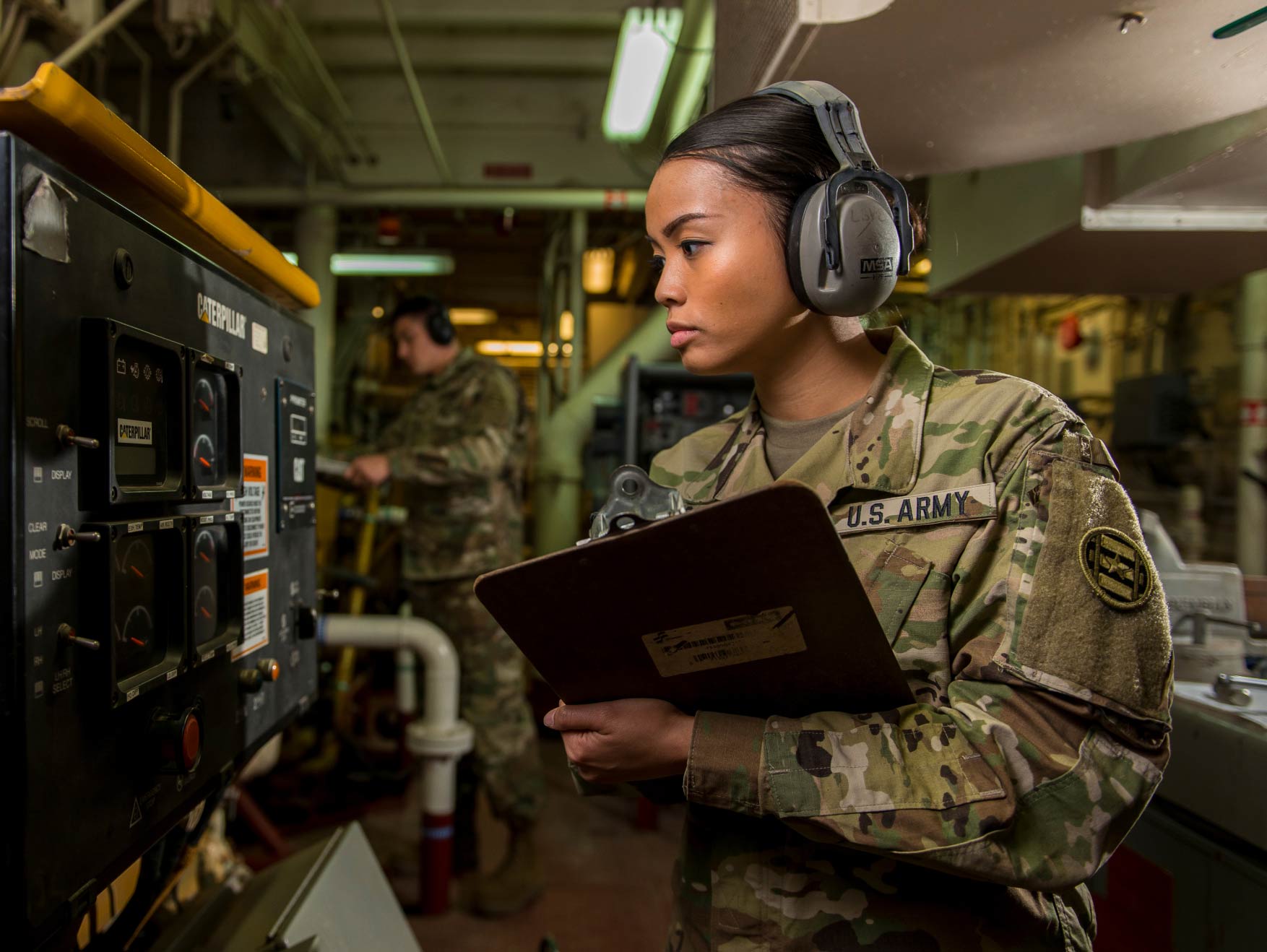When you researched the ASVAB topic, you certainly came across the PiCAT test. Many people may be ambiguous about this concept. So what is the exact PiCAT? Putting these terms beside each other: PiCAT vs ASVAB, are there any outstanding disparities between them?
For a quick answer, the PiCAT (Pre-screening internet-delivered Computer Adaptive Test) is an electronic version of the ASVAB test, which contains the same kinds of questions in a similar testing format. It is an open-ended and unsupervised online test that is considered a supplement test to the ASVAB. If the PiCAT verification test is proven, the results can also be used to qualify for enlistment in the US military.
Back to the question raised in the beginning, let’s scroll down for more to answer it right now.
Picat breakdown
The PiCAT is well-known as an electronic version of the ASVAB test that allows test-takers to self-control their space and their time. Therefore, nowadays, many people have a tendency to take the PiCAT and Verification Test for PiCAT’s score validity instead of the ASVAB to be eligible for US enlistment. Although the PiCAT test place is flexible, the PiCAT test is not allowed to use external resources, reference books, or internet searching to support candidates during the test. To make your PiCAT score valid, you have to take a Verification Test (or Vtest) at MEPS after you complete the online test within 45 days.
Notice that you will have 30 days to start PiCAT once your recruiter generates the access code for you. Also, you will have 48 hours to complete the test once you have activated your access code.

The PiCAT test consists of 145 multiple-choice, categorized into 9 sections. These sections are almost similar to the ASVAB test. Thus, after completing the PiCAT test you also get familiarized with the real ASVAB test.
- General Science
- Arithmetic Reasoning
- Word Knowledge
- Paragraph Comprehension
- Coding Speed
- Auto and Shop Information
- Mathematics Knowledge
- Mechanical Comprehension
- Electronics Information
PiCAT vs ASVAB: A full comparison
In general, there are a couple of differences between the ASVAB test and the PiCAT test, which can be concluded as follows:
Test format
The first thing distinguishing the two tests is that the PiCAT is an open-ended and unsupervised version of the ASVAB. The test is taken on a computer at home, and after you finish it, your recruiter receives the results. Unlike the ASVAB, which has a 3-hour time limit for completing the entire test in 10 sections, the PiCAT does not have this restriction.
I love the PiCAT because it counts as your ASVAB, and you can keep your score at MEPS if you pass the verification test. This means that when you go to MEPS instead of taking the ASVAB, you will complete a short (about 30-minute) test to verify that you were the one who took the PiCAT, which is essentially a verification that you did not cheat. You will find that most of the questions on the verification test are the same as those on the PiCAT you completed at home, if not entirely. If you fail the verification test, you will have to take the full ASVAB as soon as it is over.
Don’t get too excited; there is a catch that your recruiter probably will not tell you. A small percentage of people are selected at random to take the full ASVAB, regardless of whether they successfully passed their verification test as part of the study. So, it is worth asking the recruiter about the details because they will be able to provide you with more accurate information about that.

Test place
The second difference is that the PiCAT is not proctored, allowing you to take it in your recruiters’ office, while the ASVAB requires you to take it at MEPS sites, not in your recruiters’ office. The PiCAT is also divided into 10 sections, with anywhere from 10 to 20 questions per section. Reminder: Even though the PiCAT is taken at home, you still are not allowed to use a calculator. You are merely deluding yourself if you cheat. The test matches you with successful jobs based on your knowledge. At MEPS, you will only have access to a pencil and scratch paper, so if you plan to take the PICAT, make sure to bring these items from home.
FAQs
1. Is the PiCAT easier than ASVAB?
It may be concluded that the PiCAT is likely to be easier than ASVAB for several reasons. First and foremost, in terms of time constraints, the PiCAT test has more potential than the ASVAB when applicants are allowed to do the test for a longer time. Secondly, the allowance to take the test in the applicants’ own space can be one of the beneficial points for the PiCAT test-takers. No time pressure and no test-room pressure can significantly affect the test results.
2. Can PiCAT replace the ASVAB?
Recruiters can currently effectively determine an applicant’s qualification before sending them to a military entrance processing station or military entrance test site by using the PiCAT, an unproctored version of the full ASVAB. So, if you pass both the PiCAT and the verification test, you technically have an equivalent ASVAB score.
3. How many times can I take the PiCAT?
There is no limit to the number of times you can take the PiCAT test. However, to take the PiCAT, applicants must contact their recruiters ahead to get the access code. And you only provide this code once every two years. If you are not content with your score, you can retake the PiCAT test, but you need to wait for the next test in a long time.
Final thoughts
In general, the PiCAT is supposed to be an online version of the ASVAB. As presented above, there are a couple of differences between these tests in terms of test format and test place. On the other hand, they have a close relationship with each other when it comes to the values of their score. The score of PiCAT can be as valuable as the one of the ASVAB if it meets the standard requirements. So, when you want to qualify for enlistment or test your aptitude for military jobs, you can select one out of two tests. After reading the detailed analysis of two tests, PiCAT vs ASVAB, have you found a suitable test for yourselves yet? Check your own conditions and contact your military recruiters to register for the PiCAT or the ASVAB test.




